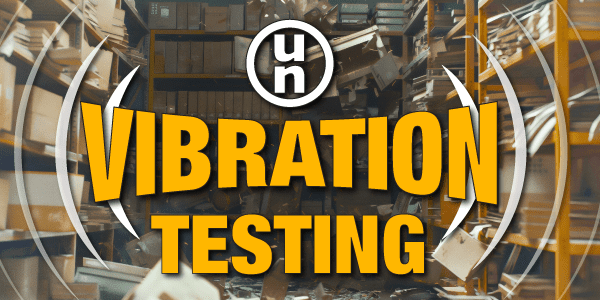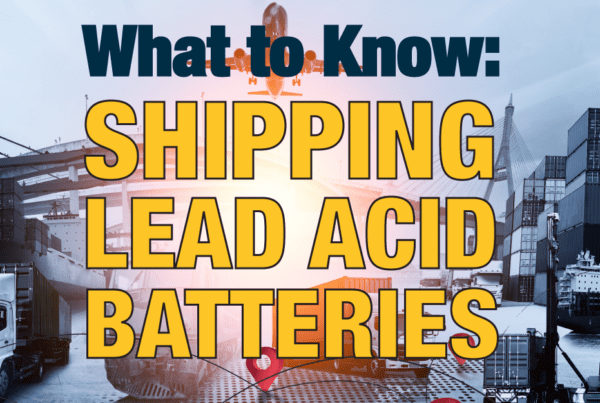Top 4 Questions From the Regulatory Helpdesk
Welcome back to the Regulatory Helpdesk where we answer your dangerous goods & hazmat questions. Here are some highlights from our helpdesk last week. Check back weekly, the helpdesk rarely hears the same question twice.
#4. Shipping Sodium (UN1428) by Air (USA)
- Q. The Customer asked if Sodium (UN1428) can be shipped by air using a plastic bag as an inner container inside of a 4GV box.
- A. Per the 49 CFR 172.102 Special Provision A20, Plastic Bags are not allowed to be used as inner receptacles in combination packaging by aircraft.
#3. When to Use Bilingual Packaging (Canada)
- Q. Does every word on [my] packaging need to be in French and English to sell in retail stores in Canada?
-
A. Canada has the federal Consumer Packaging and Labelling Act and the Consumer Packaging and Labelling Regulations. That Act and Regulation requires 2 mandatory items to be bilingual. Those items are the product identity, and the net quantity. The dealer‘s name and place of business can be in either English or French according to those laws.
However, the guide specifically states: Subsection 6(2) of the Consumer Packaging and Labelling Regulations requires that “all” mandatory label information be shown in English and French except the dealer’s name and address which can appear in either language.
Any label information in addition to the mandatory requirements discussed above (i.e., directions for use, promotional statements) does not have to appear in a bilingual manner.
Dealers are, however, encouraged to include such information in English and French. One must also take Quebec and New Brunswick into account. If the customer intends on selling into those two provinces, then yes, everything must be bilingual. Also, they must ensure that English text is the same size as French. Sometimes manufacturers will put French text in a little smaller because it typically takes up more space…but that is not permitted especially in Quebec.
#2. Retail Labelling of Explosives (Canada)
- Q. Are explosives exempted from Consumer Chemicals and Containers Regulations (CCCR)? If so, what regulates the labeling of the container and outer package? He already received some feedback on what Natural Resources Canada (NRC) wanted and has added that wording to his package.
-
A. Health Canada states the following: The following types of products are not subject to these requirements (i.e., The CCCR 2001), since they are governed by other Canadian legislation: chemical products used exclusively in the workplace, cosmetics, drugs, explosives, foods, medical devices, nuclear substances, pest control products and tobacco products. The CCCR 2001 now falls under the Canadian Consumer Product Safety Act (CPSA). That Act applies to all consumer products, except the products listed in its Schedule I. The first item in Schedule I is “Explosives within the meaning of Section 2 of the Explosives Act“.
As such, I could only tell you that any labeling would likely appear under the Explosives Act and any associated Regulations. What that labeling might be, I could not tell you. ICC doesn’t currently deal with specific ‘retail‘ labeling for explosives. If the NRC has already indicated what was necessary, the only suggestion I can make is to double check with them that there aren’t any other labeling regulations that are in play for his product. They should not indicate CCCR labeling since the CPSC and CCCR do not apply, per the above.
#1. Transborder Trouble (Canada & USA)
- Q. My product doesn’t appear to be dangerous goods in Canada, but my American customer says I must ship it to them as an environmentally hazardous substance. Why?
-
A. This is a bit complicated because of the differences between 49 CFR, Canada, and UN definitions of what is environmentally hazardous.
First, check to see if your chemical is listed by name in TDG Schedule 1 or the Hazardous Materials Table of 49 CFR. If it isn’t listed in either, check to see if it meets the criteria of classes 1 through 8. If it doesn’t, it’s usually not regulated as dangerous goods.
However, for U.S. shipments, you must also check if it is listed in 49 CFR in Appendix A to the Hazardous Materials Table (section 172.101). If it is, it will be given a Reportable Quantity (RQ) of 1, 10, 100, 1000 or 5000 pounds. Packages containing a net quantity equal to or greater than the Reportable Quantity will be classified in the U.S. as an Environmentally Hazardous Substance. If there is no other hazard class, it will be assigned to Class 9, and either UN3077, Environmentally hazardous substance, solid, n.o.s. or UN3082, Environmentally hazardous substance, liquid, n.o.s. The technical name will be whatever chemical is present at the RQ level or higher. Also, non-bulk packages must be marked with the letters “RQ”, and the shipping paper must include the letters “RQ” before or after the shipping description.
In general, when shipping a material between Canada and the U.S., if it is not regulated in one country but regulated in the other, you must ship it as regulated. Canada permits the use of 49 CFR classifications for goods not regulated in Canada in TDG section 1.11.
Reportable quantities and the RQ classification only apply within the U.S. So, if a shipment does not begin, end or enter U.S. territory, the above would not be applicable. However, the RQ is only one way chemicals can be classified as environmentally hazardous. The United Nations Recommendations on the Transport of Dangerous Goods have their own criteria, which is based on environmental testing of chemicals to determine if they’re harmful, rather than using a list like the RQs. These materials should be shipped with the Marine Pollutant symbol beside the class label or placard (although Canada gives an exemption in TDG 1.45.1 for marine pollutants transported by ground only), and must include the words “Marine Pollutant” after the shipping description on the shipping document.






 ICC USA
ICC USA ICC Canada
ICC Canada
Re: Regulatory Helpdesk, #1 – Transborder Trouble.
I have a slight correction to your article.
In Canada, The Marine Pollutants exemption TDG 1.43.1 referred to should be TDG 1.45.1
Hello Roger,
Thanks for finding that typo. We’ve updated the article to the correct reference.